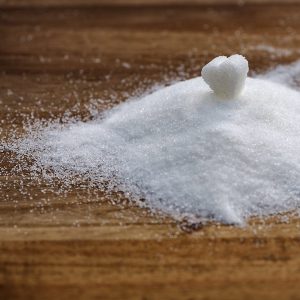Fat mass is the result of a balance between fat oxidation (“burning” fat) and fat storage while muscle mass is the result of a balance between protein breakdown and protein synthesis.
All of these four processes occur in your body and it is the BALANCE between them which is important. Increasing fat oxidation may, for example, not lead to fat loss if fat storage also increases (this happens in LCHF diets). Your fat balance is, however, ultimately determined by if you are in a caloric deficit or not.
Your protein balance, while being negatively affected by a caloric deficit, is not completely determined from your energy balance. Particularly in untrained individuals or individuals with a high body fat percentage, there have been studies showing that, during a caloric deficit, lean muscle mass can increase as fat mass decreases if protein consumption is high enough!
In addition to this, caloric deficits with high protein levels also caused significantly higher strength gains compared to controls! Similar increases in lean body mass have been seen in athletes, if the caloric deficit isn’t too big.
It thus seems that the more well trained you are, the harder it is to build muscle and lose fat at the same time, explaining why many bodybuilders find doing cycles of “bulking” and “cutting” are more effective for reaching optimal body composition.
Our book Diet Like a Doctor teaches you how to figure out how many calories you need to maximize fat loss while avoiding big muscle losses. You can find it here.
Sources:
1. Andrea R. Josse. Increased Consumption of Dairy Foods and Protein during Diet- and Exercise-Induced Weight Loss Promotes Fat Mass Loss and Lean Mass Gain in Overweight and Obese Premenopausal Women. J Nutr. 2011 Sep; 141(9): 1626–1634.
2. Garthe I. Effect of two different weight-loss rates on body composition and strength and power-related performance in elite athletes. Int J Sport Nutr Exerc Metab. 2011 Apr;21(2):97-104.




